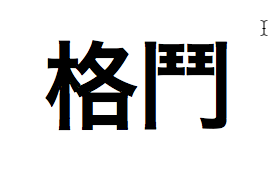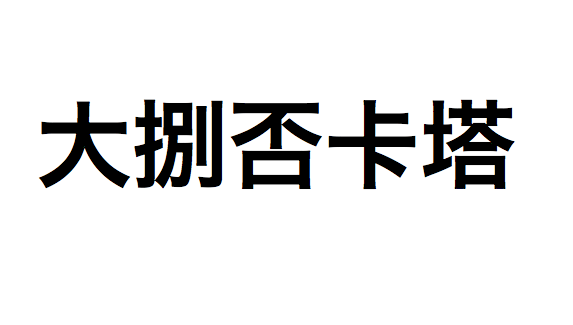Force 5 Training Center’s new facility in Lancaster, California officially opened its doors Monday November 26th. The training center will host a variety of martial arts and fitness classes for both kids and adults, including fitness boot camps, mixed martial arts, jui-jitsu, executive protection seminars, and many others. Force 5 Training Center (The Pit) additionally gives members the latest training ...
Read More »Tag Archives: Training
Muay Thai Work Shop with World Champion Muay Thai Fighter and MMA Fighter Gustavo Kuhn at Brand New Mixed Martial Arts Training Facility in Western Massachusetts
The opportunity to work with a world champion Muay Thai fighter does not happen every day. Team Link in Ludlow Massachusetts is proud to have 4x Brazilian Nation Muay Thai Champion, current South American Muay Thai champion, and 4th Place winner of Thailand’s International Muay Thai Championship, Gustavo Kuhn teaching all the techniques that made him the champion he is ...
Read More »THE PERSONAL WAY OF THE SWORD
As the martial arts left the Oriental world and literally spread to nearly every country on the face of the earth, there has been a gap created that people have not been able to breech. That gap was first caused by the fact that Westerners did not understand certain fundamental aspects of Oriental thought. Where the Western mind was focused on facts, intellect, and reason, the Oriental mind turned to aesthetics, intuition, and freedom. Where Westerners fought for physical freedom, the Orientals developed personal freedom of mind and spirit. Westerners desired and sought open spaces creating in themselves an individuality unheard of in the East, while Orientals developed a highly integrated society where the individual only exist as a part of the group, from living in a country without the vast open spaces of a continent.
Read More »The Multiple Legacy of Daito Ryu
No system has had a greater influence on the development of the modern martial arts than the one known as Daito Ryu. Known primarily as an Aikijujutsu system, according to the students of Sokaku Takeda, the system was actually much more comprehensive in nature than just being an Aikijujutsu, empty hand, system of combat. Like most ancient Ryu, the system was designed to teach total combat to the practitioners from every weapon of the time, to combat skills applicable to Ashigaru (foot soldiers), as well as, Bushi, the upper echelon of the Samurai clans. Thus Daito Ryu as a Bujutsu or Bugei, martial arts system, taught Jujutsu, Aikijujutsu, and weaponry.
Read More »The Misunderstanding of Ki
Ki! When the word is mentioned it fills the mind with thoughts of wondrous ability, many times considered far beyond the realm of normal human experience. Probably the one personage to pop into the head of the practicing martial artist, when Ki is mentioned, is Morihei Ueshiba, the great master and founder of Aikido.
Read More »Teaching Grappling: The Combat Way
Many people are interested in teaching grappling skills, but too many of them have only a peripheral knowledge of grappling skill and that from the perspective of sport Judo, which taught techniques developed only for sport, not intended for combat. Now I am sure this supposition needs to be explained from a historical point of view, and the answer is actually quit simple.
Read More »TAI SABAKI NO KATA THE BODY MOVEMENTS OF FORM
It has been acknowledged by most authorities, at least those who actually train in traditional martial arts, that Kata is the most important form of training that exists. While some people get confused about what constitutes Kata, the truth is some of the people who deride it as impractical, actually practice it themselves. One very public figure used to talk about how Kata was not a good form of training for actual fighting, yet in preparation for fighting competition, the person spent many hours 'shadow boxing', which is actually just a spontaneous method of practicing Kata. In all truth, there was a time in martial arts history when all Kata, in all countries, were only extemporaneous, for it was found that freestyle practice developed the freedom of movement and the unrestricted mind necessary for excellence in combat.
Read More »SAY NO TO THE KILLER INSTINCT
Some people say that in order to be a good martial artist or an expert of self defense, it is necessary to possess a killer instinct. Yet the very people who need self defense skills the most are those people who tend towards gentleness and non-violence. Would a person who is truly gentle and peaceful even enter a Dojo, if he/she were actually convinced that he/she would have to develop a killer instinct? Probably not. More important, what needs to be considered, is a killer instinct actually a positive attribute or a deadly attitude that needs to be expunged from a martial artist's personality.
Read More »Odori – The Greatest of All “Secret” Principles
Odori means dance, and has two separate meaning in regard to the Orient. There are Odori which are part of ceremonial religious practices, especially of the animistic faiths of the Orient and in Japan connected to Shinto. There are some dances attached to Buddhist celebrations, such as the Obon festival, when the spirits of the deceased visits their family and friends. These dances have survived as ceremonial rites still associated with celebrations of many religious holidays.
Read More »MARUI KEMPO CIRCULAR BOXING
Kiyojute Ryu Kempo Bugei is a unique martial arts system, in that it recognizes the many influences which took place to create the unique Okinawan Bujutsu. There have been many influences upon the small island, beginning with whatever indigenous fighting style the original settles brought with them, to the twelfth century entry of Minamoto Bujutsu, to the fourteenth century Chinese systematic influences, to the seventeenth century entry of Jigen Ryu of the Satsuma clan, and ending with a renewed interest in Chinese boxing during the late nineteenth century and early twentieth century.
Read More » Martial Arts Business Magazine Resources for Running Your Martial Arts Business
Martial Arts Business Magazine Resources for Running Your Martial Arts Business




